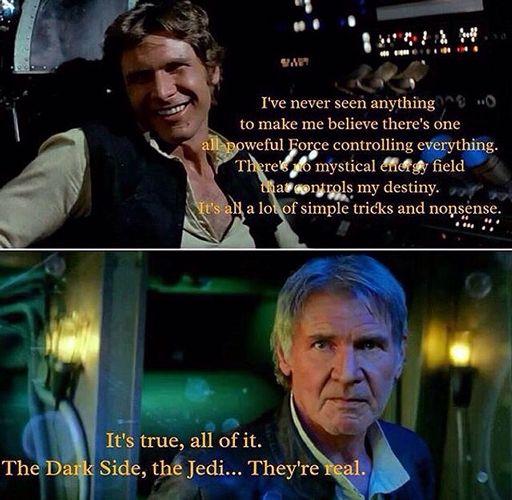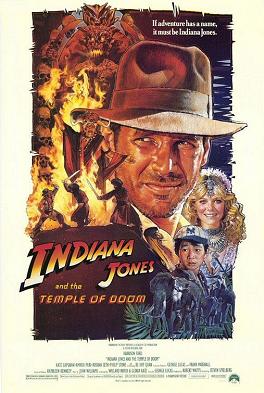
Film Review – Star Wars: The Last Jedi

Disney’s Rey of Light
When the long-anticipated first entry of the Star Wars sequel trilogy, The Force Awakens, was released in theaters in 2015, it received widespread acclaim, with many critics calling it “a return to greatness.” However, as a longtime fan of the franchise, I disagree that the series ever “peaked” (an endemic opinion that emerged after the polarizing Prequel Trilogy), given the obvious overlooked flaws in the original films. Nonetheless, I continue to support the multimedia cash cow with my attention and money. The following year came the debut of the spinoff Star Wars film Rogue One, also well-revered, afterward the next mainline Episode, Star Wars: The Last Jedi.
Major Spoilers for The Force Awakens
Despite losing Starkiller Base, a third Death Star in all but name, the First Order rules the franchise’s nameless galaxy, forcing the Resistance to evacuate their main fleet on the planet D’Qar. In a daring move, pilot Poe Dameron leads a solo attack against the First Order dreadnought Fulminatrix, destroying its critical cannons and creating an opportunity for Resistance vessels to escape. However, Dameron’s decision to defy General Leia Organa’s orders and attempt to destroy the entire ship leads to his demotion to captain. This is a significant development as it highlights the ongoing tension and personal struggles within the Resistance, particularly in the aftermath of Han Solo’s patricide by his son, Ben, who still identifies as Kylo Ren.
The film picks up where The Force Awakens left off. On the aquatic world Ahch-To, Rey presents the self-exiled Jedi Master Luke Skywalker with his old lightsaber. The legendary Jedi Knight casually tosses it aside and locks himself in his hut. This moment has sparked intense debates among fans, critics, and even actor Mark Hamill. Luke has been criticized for allegedly losing his character growth from the Original Trilogy. However, one should consider that Kylo was his nephew, his flesh and blood. As I am no stranger to the pain of betrayal from my biological family, I can empathize with Luke’s reaction and understand his decision.
Meanwhile, Supreme Leader Snoke questions his apprentice Kylo’s loyalty to the dark side of the Force and potential to become a worthy successor to his maternal grandfather, Darth Vader. Snoke sees that Kylo has “too much of his father’s heart” in him and disciplines him through various Force powers like lightning. Back on Ahch-To, Rey tries to recruit Luke into the Resistance against the First Order, mentioning that his sister Leia sent her. However, Skywalker insists that the time of the Jedi Order has passed, alluding to their downfall after the Clone Wars. Eventually, the Jedi Master agrees to give Rey a few lessons despite his pessimistic views.
After an attack by the First Order on the vessel Raddus exposes Leia to cold space, the long-necked and lavender-haired Vice Admiral Amilyn Holdo, portrayed by franchise newcomer Laura Dern, takes charge of the Resistance. Holdo disdains Poe’s warning that the fleet will run out of fuel, causing the pilot to distrust the new commander. Meanwhile, former First Order stormtrooper Finn, now a full ally of the Resistance, wants to search for Rey and joins one of his admirers, Rose Tico, to seek the Master Codebreaker in the casino city Canto Bight on the advice of Maz Kanata (embroiled in a union dispute) so that they can disable the First Order’s hyperspace tracker.
On Ahch-To, Rey and Kylo briefly communicate telepathically, hinting at a deeper connection between the two characters. However, their interaction is disrupted by Luke, who initiates her first lessons and enlightens her that the Force is not a simple dichotomy of light and dark, as previously believed. Rey uncovers a place beneath the island, steeped in the dark side. Afterward, she continues her conversation with Kylo, who compels her to find the truth of his descent into darkness and the subsequent rift between him and his uncle. When Rey ultimately departs, an old friend visits Luke, who urges him to transcend the past. He delivers the most iconic quote in the Sequel Trilogy, underscoring the film’s profound impact on the Star Wars narrative.
Poe assists Finn, Rose, and BB-8 in visiting Canto Bight on Cantonica, where they encounter trouble with the local police. While in custody, they manage to escape with the aid of the stuttering slicer DJ, portrayed by Benicio Del Toro, who is also a new addition to the Star Wars saga. DJ assists them in infiltrating the Supremacy, disguised as First Order officers. Despite their efforts, they are eventually apprehended, leading to a confrontation between Captain Phasma and the defector Finn. The First Order decimates the Resistance’s fleet, leaving only the Raddus. Poe challenges Vice-Admiral Holdo, who commands the ship’s evacuation to an old Rebel Alliance outpost on Crait, the setting for the film’s climactic battle.
Meanwhile, Rey takes an escape pod from the Millennium Falcon and surrenders herself to the First Order. Kylo Ren escorts her to Supreme Leader Snoke’s throne room, leading to a confrontation reminiscent of Return of the Jedi, where she tries to persuade Kylo to abandon the dark side. The leader of the Knights of Ren grapples with both sides of the Force. The movie culminates in the Battle of Crait, echoing the Hoth battle at the start of The Empire Strikes Back, delivering unexpected twists that conclude the eighth episode on a high note.
As someone who initially didn’t care much for The Force Awakens but believed Episode VIII was an improvement, perhaps the pinnacle of the Sequel Trilogy, my first rewatch solidified that view. Most of the film felt fresh; since I rewatched the movie on Disney+, I saw it in its entirety and could mercifully pause for bathroom breaks. Like its predecessor, the writing is nothing short of intelligent. It has witty banter galore, plenty of homages to the Original Trilogy, and characters on either side of the conflict, predominantly Luke and Kylo, being equally just in their motives. The gray area of the Force receives significant focus as well.
However, while The Last Jedi is nearly perfect, it shares the same issues as its predecessors, chiefly the sheer number of events that occur within the films (for instance, C-3PO no longer has the distinctive arm color he had in Episode VII). No specific trilogy or movie has ever been the main problem with Star Wars; yet, admittedly, creator George Lucas wasn’t entirely foresightful when expanding it into a franchise. Consequently, the numerous spinoff books and television series have had to fill in the gaps between the films, and many remain unfilled. Nevertheless, the second installment of the Sequel Trilogy is a pinnacle of the Skywalker Saga and the series.
| The Good | The Bad |
|---|---|
| Excellent acting. Very intelligent writing. Insightful sociopolitical commentary. Engaging character growth. Tons of great homages to the Original Trilogy. Superb soundtrack and visual effects. | Still a lot of things that occur outside the films. |
| The Bottom Line | |
| One of the high points of the Star Wars saga. | |
 | |











